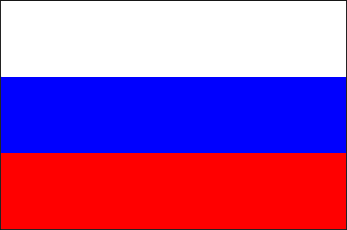Results
- A summary monographic description of intrusive magmatism of the best studied part of the Ural mobile belt (Middle and South Urals) is fulfilled. The main informative features of ultramafic-mafic, gabbro, granite and granitic complexes were formulated, allowing to understand the nature and the laws of the belt evolution and its endogenous activity in the Paleozoic period (see Fig.).
- The U-Pb age of zircons from granites and apogranite metasomatites of Berezovsky gold field is determined. The age of granites is 302±3 and 305±7 Ma. The age of beresites related to the main stage of hydrothermal gold mineralization is 294±2 Ma. The obtained age data exactly determine the position of the main economic type of gold mineralization in the geological history of the Middle Urals and its relation to the processes of early collision.
- Effusive and intrusive ankaramites were found in the Early - Middle Devonian volcanic island arc suites of the Middle and South Urals. Ankaramitic melts were concluded to be parental for platinum-bearing dunite-clinopyroxenite-gabbro complexes of the Ural-Alaskan type.
- The data characterizing the age boundaries of formation of massifs and variously-depth Ti-Fe-V-fields of the Kusinsky-Kopansky complex of the Southern Urals were obtained. The lower age boundary of 1380–1385 Ma is dated by U-Pb age of zircon from anorthosites the Medvedevsky deposit, while the data of U-Pb dating of zircon from the late granite porphyry dikes define the time (1353±16 Ma) of completion of the formation of this complex.
- The most productive for gold mineralization quartz-vein-type mantle-crust massifs of tonalite-granodiorite-granite composition, such as the Shartashsky, Akhunovsky and others were found to have their own distinct fluid characteristics. Apatites in these massifs are minimally chlorine-bearing and enriched with sulfur. Elevated concentrations of sulfur, reaching 1.0 wt.% SO3 were found in apatites of granite porphyry dikes and beresites of the Berezovsky gold deposit. These data provide direct evidence to the magmatic source of sulfur participation in the formation of gold mineralization of the Berezovsky deposit.

The scheme of tectono-magmatic zoning of the Middle and South Urals.
I – the common Ural suture megablock including the Main Ural fault zone (MUF); II, III - island-continental megablocks: North-West (II) with the Ordovician-Silurian island Tagil Megazone including the Ural Platinum-bearing Belt (IIa') and volcanic zone (IIa''), Devonian-Early Carboniferous active continental margin (IIb) and continental area (IIc), and the South East (III) with Devonian island arc volcanic zone (the Magnitogorsk Megazone, IIIa), Devonian-Early Carboniferous active continental margin (IIIb) and predominantly Paleozoic continental zone (IIIc). The sign IIIb 'shows the northern part of the active continental margin, whose belonging to the southeastern megablock requires further study. To the west of the territory shown there is Paleozoic continental megablock, a passive Paleozoic margin; to the east – Trans-Urals, a transition zone to the Kazakhstan continent. Dotted ovals mark gravimetric minimums supposedly fixing buried granite-gneiss domes.
Publications
Fershtater G.B., Krasnobaev A.A., Bеа F., Montero P., Borodina N.S. Intrusive magmatism of the early stages Uralian epioceanic orogen development: U-Pb geochronology (LA-ICP-MS, NORDSIM, SHRIMP-II), geochemistry, evolution // Geochimia. 2009. № 2. P. 150-170.
Fershtater G.B., Kholodnov V.V., Kremenetsky A.A., Krasnobaev A.A., Borodina N.S., Zin'kova E.A., and Pribavkin S.V. Au_Bearing Gabbro–Tonalite–Granodiorite –Granite Plutons of the Urals: Age, Geochemistry, and Magmatic and Ore Evolution // Geology of Ore Deposits, 2010, Vol. 52, №. 1. Р. 58–76.
Fershtater G.B. Paleozoic intrusive magmatism of the Ural as a key to understanding its nature // Lithosphere. 2012. № 1. P. 3-13.
Kholodnov V.V., Shagalov E.S. Upper and lower age limit of Middle Riphean ore-bearing (Ti-Fe-V) massifs of kusa-kopan complex at S. Urals: U-Pb zircon dating from Medvedevka deposit // Proceedings of RAS, 2012. 446. № 4. P. 432-437.
Fershtater G.B. The Main Features of the Uralian Paleozoic Magmatism and the Epioceanic Nature of the Orogen // Miner Petrol. 2012, DOI: 10.1007/s00710-012-0218-6.
Garuti G., Pushkarev E.V., Thalhammer O.A.R., Zaccarini F. Chromitites of the Urals (Part 1): Overview of chromite mineral chemistry and geotectonic setting. // Ofioliti. 2012. Vol. 37. № 1. P. 27-53.
Pribavkin S., Avdonina I., Zamyatin D. Mineralogy, conditions of crystallization and melt generation of epidote-bearing porphyries from the Middle Urals, Russian federation // Mineralogy and Petrology. DOI 10.1007/s00710-012-0226-6.

Research Projects
In the recent 5 years, 7 of the laboratory of Petrology and Magmatic Formations research projects have been supported by RFBR grants.

